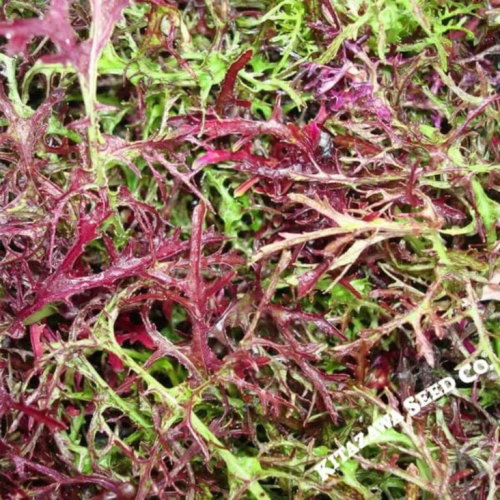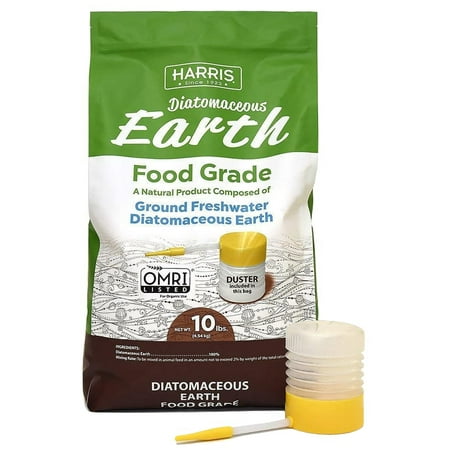If you aspire for tasty homegrown harvests in winter and spring, I recommend planting these 7 easy-to-grow vegetables in August
Featuring many cut-and-come-again crops that reward you with multiple pickings

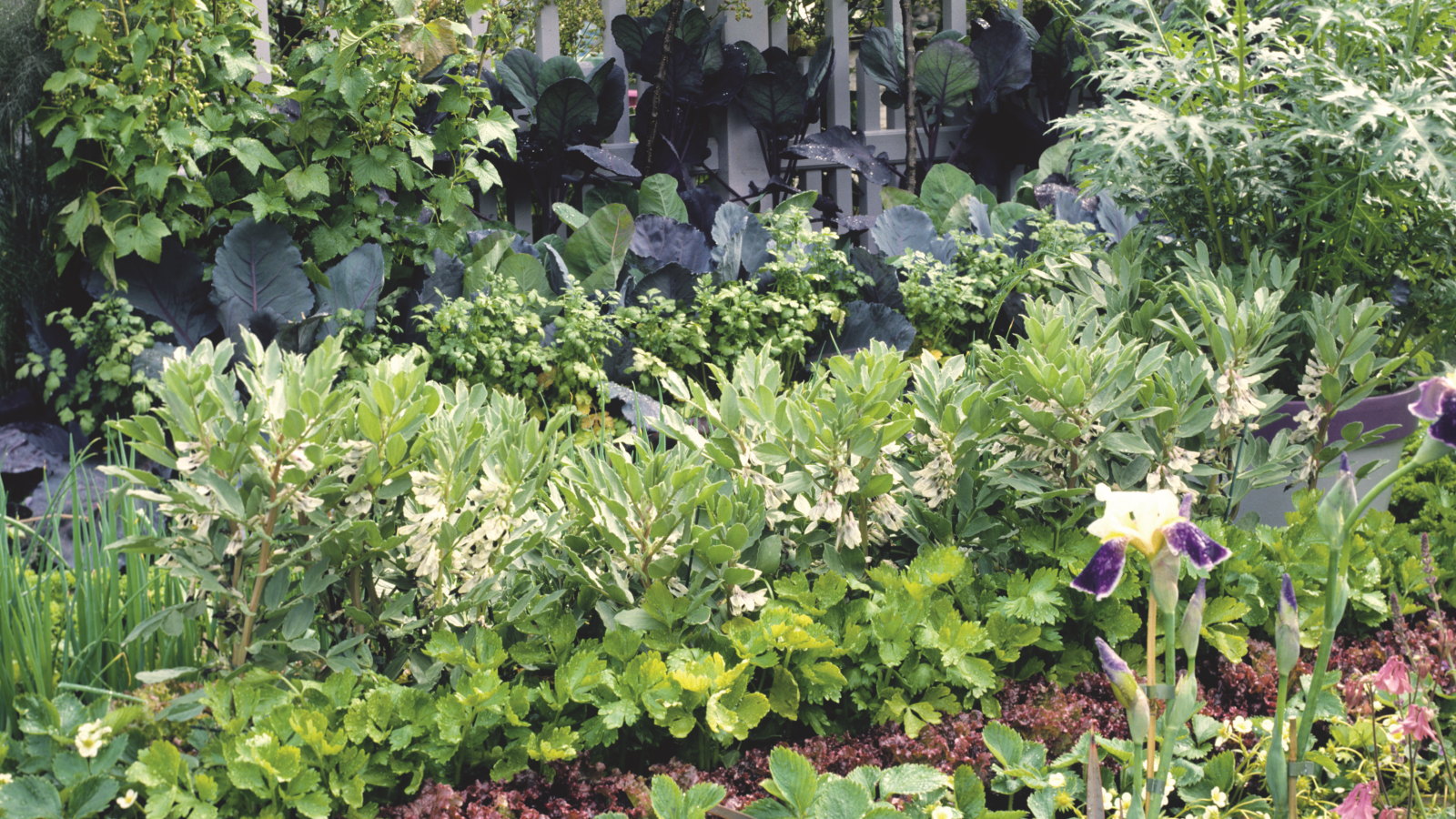
Summer is not the time to rest on your laurels. The vegetable garden may be providing bountiful harvests now, but you want that to continue. That is where it pays to be proactive and keep planting crops that will be ready to pick when the days shorten and temperatures drop.
Of course, you must enjoy the summer vegetable garden, the sights, the sounds, and the satisfaction of harvesting homegrown crops. But also take time to plant vegetables for the weeks and months ahead, filling in gaps that appear from harvesting summer crops.
If you wonder what to plant in August, I’ve got you covered. I grew and harvested vegetables year-round for restaurants in walled kitchen gardens; the plots had to be productive 52 weeks a year. Here are my picks for vegetables to plant in August that will provide you with homegrown harvests in late fall, winter and through spring.
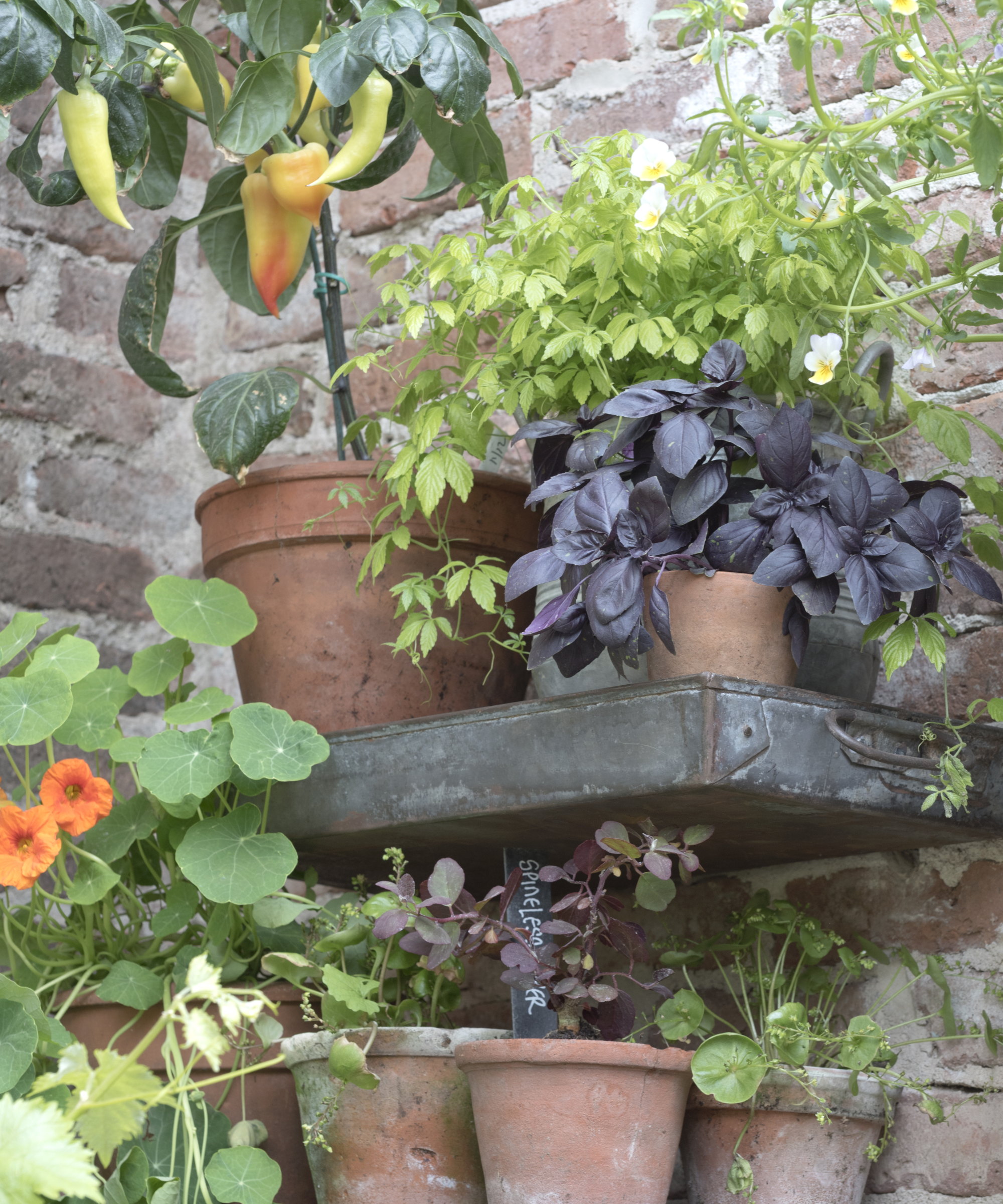
My 7 recommendations for vegetables to plant in August
Many of the following are cut-and-come-again crops that can provide many harvests through the colder months, enabling you to get the most produce from plots of any size.
All of the following are fantastic vegetables to plant in August, and are easy to grow. To help you on your way, I reveal my sowing tips and a few pointers I’ve picked up over my years as a kitchen gardener.
1. Spinach
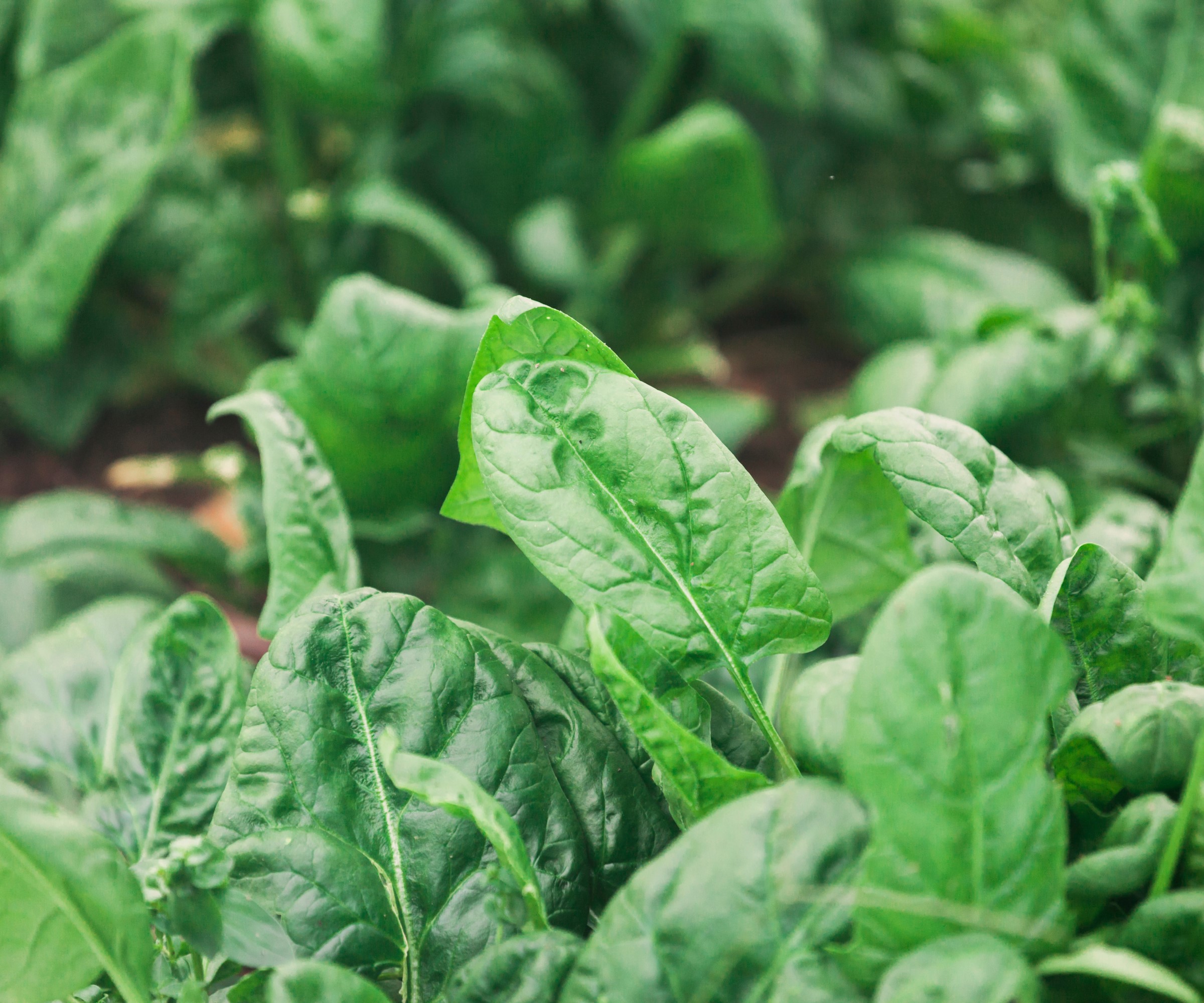
You can grow spinach year-round with some planning (if you want to), and sowing in August can provide cut-and-come-again harvests between October and potentially April. Spinach is a quick and easy vegetable to grow, but ensure you pick a cold-hardy variety to sow this month.
These ‘Winter Giant’ spinach seeds at True Leaf Market are ideal to grow as a fall and winter crop.
Design expertise in your inbox – from inspiring decorating ideas and beautiful celebrity homes to practical gardening advice and shopping round-ups.
Thinly sow spinach seeds directly outdoors in inch-deep drills, then cover and keep moist. If you sow multiple rows or plan to successively plant spinach a few weeks later, keep the rows a foot apart.
Thin the spinach seedlings to three inches apart as they develop, and start harvesting spinach once leaves reach a usable size. Always pick the larger, outer leaves to allow the younger ones to continue to grow.
2. Turnips
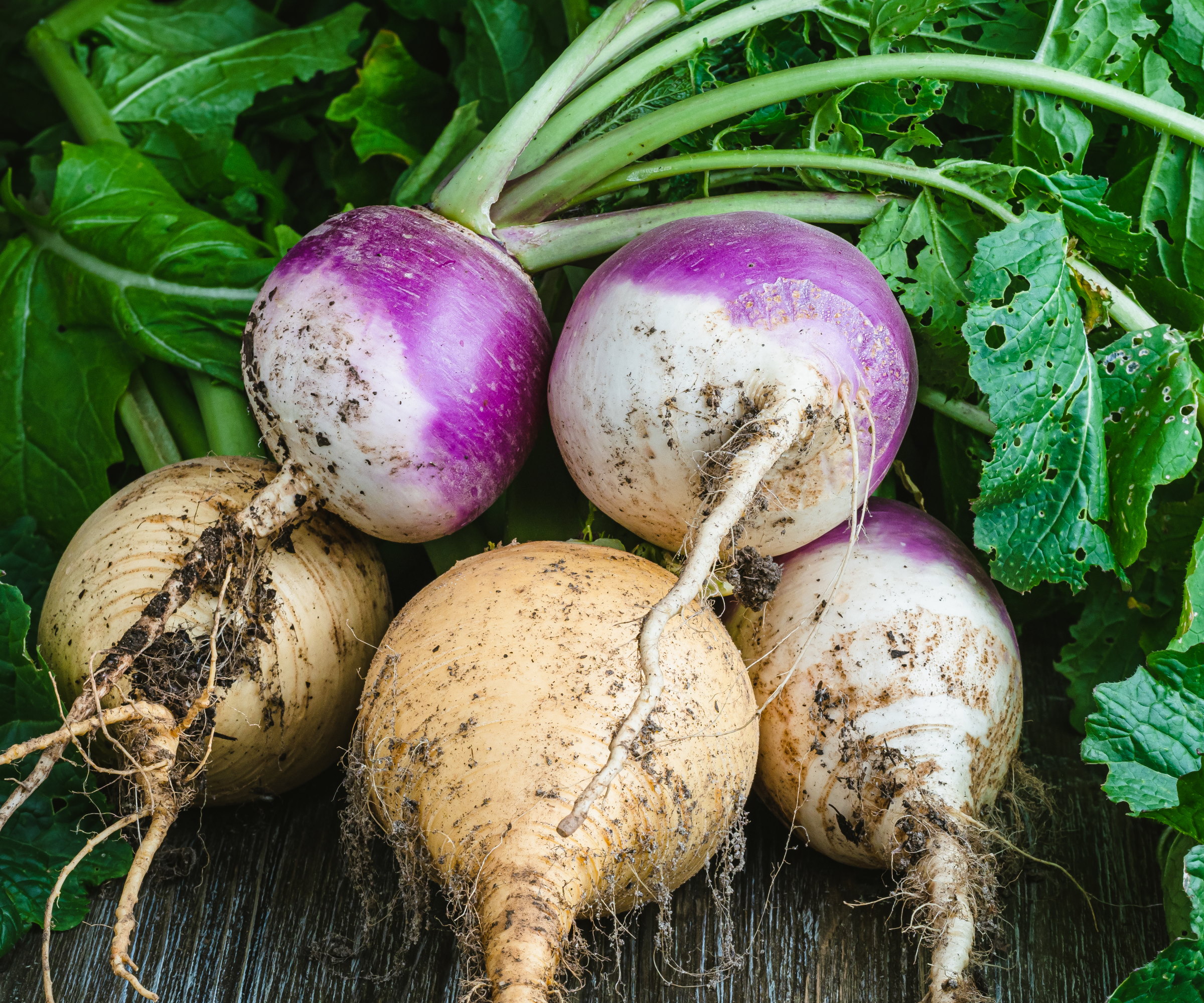
Turnips are a root vegetable that is enjoying a renaissance in recent years. Growing turnips is a simple experience, and the lifted roots will be great for adding to casseroles or stews during the colder months.
Maincrop turnips can be sown in August for harvesting and storing around October. You should sow seeds outdoors directly into their growing position, as the crop does not like root disturbance. Simply sow thinly into half-inch-deep drills spaced a foot apart, and thin the seedlings to around six inches once they appear.
Harvest the turnips once the roots are two inches in diameter, between the size of a golf ball and a tennis ball. Don’t leave them too long in the ground, as the roots can get woody and the flavor diminishes with age. In colder climates, lift the crop in October and store the roots to use over the winter months.
'Purple Top' turnip is a classic variety with white roots topped with shades of pink or purple, and I have always found it very reliable. You can get 'Purple Top' turnip seeds at Burpee.
3. Chard
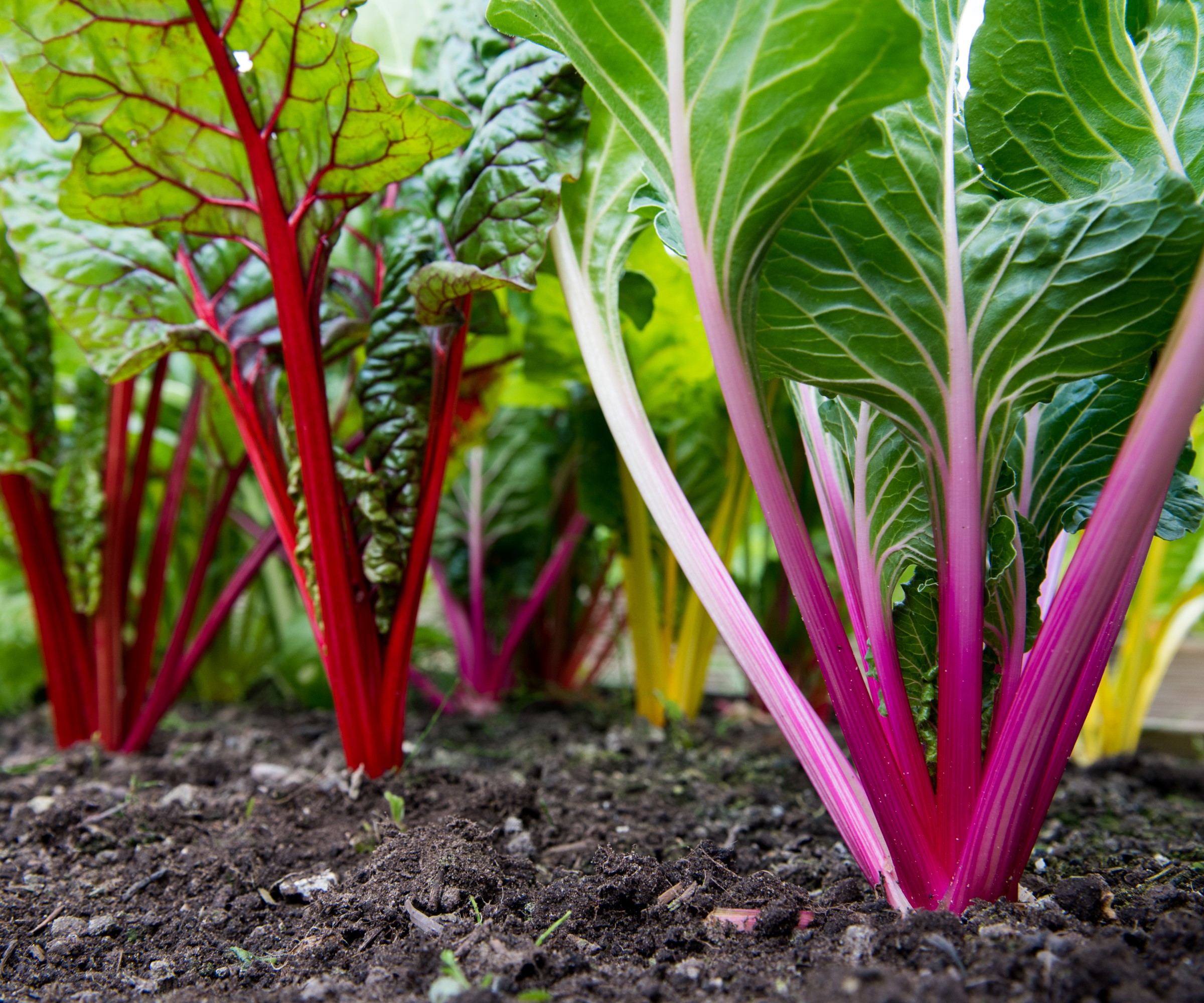
Swiss chard makes a fantastic decorative vegetable to grow. Its large, colorful leaves add drama and interest to any kitchen garden or potager, and baby leaves can be eaten raw, while mature ones can be sautéed or added to stir-fries.
The leaves are best eaten freshly harvested (they don’t travel well and tire quickly), so it is better to grow Swiss chard at home rather than buy it from stores.
For a year-round supply of Swiss chard to harvest, sow first in spring and then do a second sowing in August. If you plant Swiss chard in midsummer, these plants are ready to harvest in late winter and spring, once the spring-sown plants are depleted.
Either sow seeds directly outdoors in inch-deep drills and thin seedlings to six inches apart, or sow seeds indoors in pots in a cold greenhouse or cold frame to plant outside in around a month.
Opting for a mix of chard seeds guarantees a vivid display of stems and leaves. These Swiss Chard 'Rainbow Mixture' seeds at True Leaf Market will give you red, yellow, orange, white, and pink chard to harvest.
4. Bok choy

Bok choy is also known as pak choi or Chinese cabbage and is a fantastic vegetable popular in many Asian dishes. You do see it for sale in grocery stores, but it is also an easy crop to grow at home, where you can choose from white, light green, or purple varieties to cultivate.
It is a vegetable that thrives in the cooler weather of spring and fall; it is prone to bolting in summer. Sowing in August will provide a delicious fall harvest of sweet, peppery leaves.
Bok choy prefers a sunny position, but it is a vegetable that can also grow in partial shade. Direct sow the seeds this month into inch-deep rows a foot apart. Keep the soil moist and thin the seedlings to nine inches apart.
It is advisable to protect plants with row covers, so the leaves don’t get nibbled by pests. You can start harvesting the leaves around 30-40 days after sowing as a cut-and-come-again crop.
See the range of bok choy seeds at True Leaf Market
See the range of bok choy seeds at Amazon
5. Spring cabbages
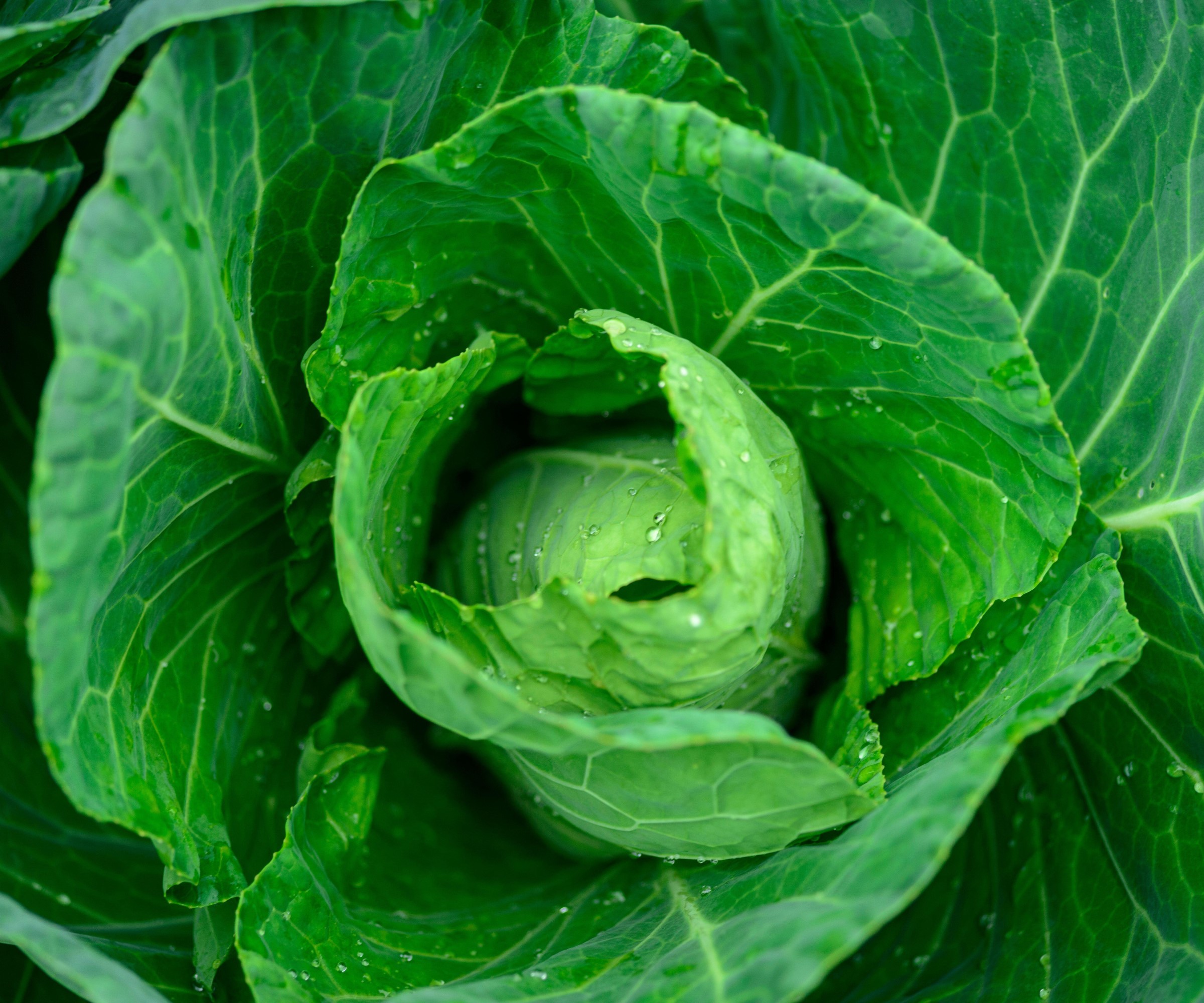
Spring cabbages are smaller and sweeter than other cabbages, and can provide one of the earliest crops each year in a vegetable garden. They are often more pointed in shape than more traditional round cabbages and are sown in summer to harvest the following spring.
The best way to plant cabbages this month is to start them indoors in an unheated greenhouse or on a windowsill. Sow the seeds in large modules or individual pots filled with seed compost, and place them somewhere bright.
Keep the soil moist, but not waterlogged, and the young plants that develop can be planted outside 4-6 weeks after sowing. Net the plants to protect them from pests, and you should harvest the cabbages in March or early April. For an even earlier crop, immature spring cabbages can be cut as nutritious spring greens in February.
See the full range of cabbage seeds to plant at Amazon
See the full range of cabbage seeds to plant at Walmart
See the full range of cabbage seeds to plant at Burpee
See the full range of cabbage seeds to plant at True Leaf Market
6. Kale

Kale is a very hardy vegetable to overwinter, and you can get tasty and nutritious harvests of this easy superfood to grow throughout the colder months from a sowing this month.
If you want to start growing kale in August, the best tactic is to sow seeds into module trays or individual pots and start them off in a greenhouse, cold frame, or on a bright windowsill. Then transplant the seedlings out into the vegetable garden in 4-6 weeks, and keep them protected from pests with row covers.
Sowing this month means the opportunity to harvest kale throughout winter and early spring, as kale can withstand harsh winter colds better than most crops. You can even grow kale in crops in smaller spaces.
There are many different types of kale you can choose from; the leaves come in varying sizes and can be shades of green or red.
I always loved growing Lacinato kale, also known as Black Tuscan kale or Dinosaur kale, which has distinctive dark green, crinkled, strap-shaped leaves. You can get Kale ‘Lacinato’ seeds at True Leaf Market.
7. Mizuna
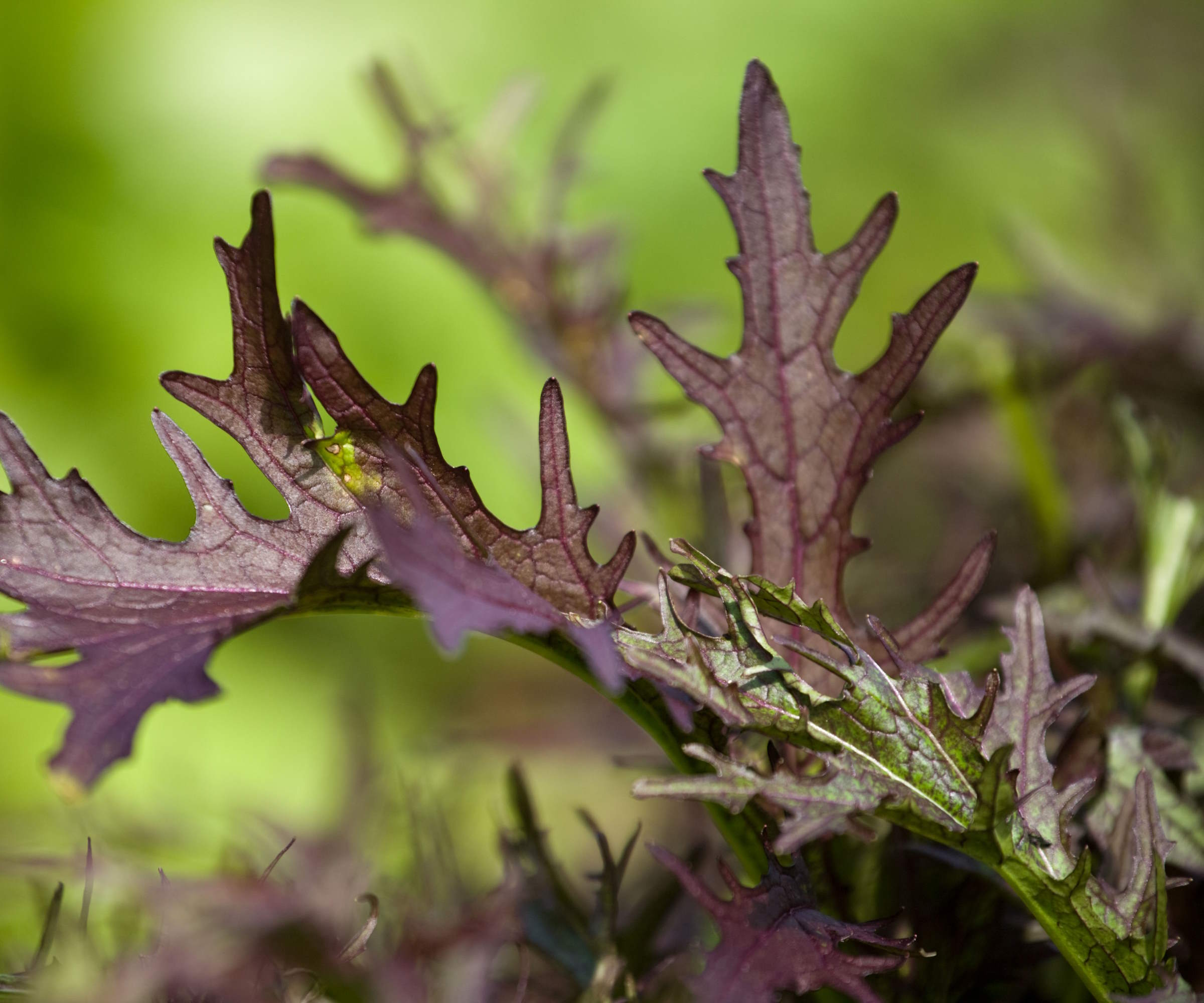
This Asian leafy green has red or green serrated leaves with a mild peppery flavor. It is a fast-growing vegetable crop that can be grown practically year-round to add a spicy note to salads. When you grow mizuna, it is best harvested as a cut-and-come-again crop, the flowering stems are also edible.
Sow the small mizuna seeds directly into the soil in August, scattering them thinly in drills a half-inch deep and keeping rows six inches apart. Thin the seedlings to a minimum of eight inches apart and keep the soil consistently moist.
You may face problems with slugs potentially nibbling the young seedlings as they develop. Consider using slug control methods to prevent this, such as beer traps, diatomaceous earth, or scattering rough materials like crushed eggshells or small gravel around the seedlings to create a barrier.
FAQs
Can I sow cucumbers in August?
August is too late for planting cucumbers in many climates, where they are best sown in late spring or early summer. Gardeners in warmer climates do have a much longer season and can grow cucumbers much later in the year. When you grow in US hardiness zone 9 or 10, for example, you can sow cucumbers in August.
Can I sow potatoes in August?
You can plant potatoes this month that will be ready to harvest at Christmas. The best types of potatoes to use for this are first and second early potato varieties. To harvest winter crops, you need to grow potatoes in a frost-free position, which can be in a greenhouse, conservatory, or porch. It means you may need to grow potatoes in containers or grow bags.
Planning for future growing seasons will reap rewards this month, so here are two other jobs to add to your summer gardening checklist. Firstly, check if any plants in your yard feature in our guide to plants to propagate in August, so you can get new ones for free. And take some time to order bulbs in August so you get in there early and don’t miss out on any ones you desire.
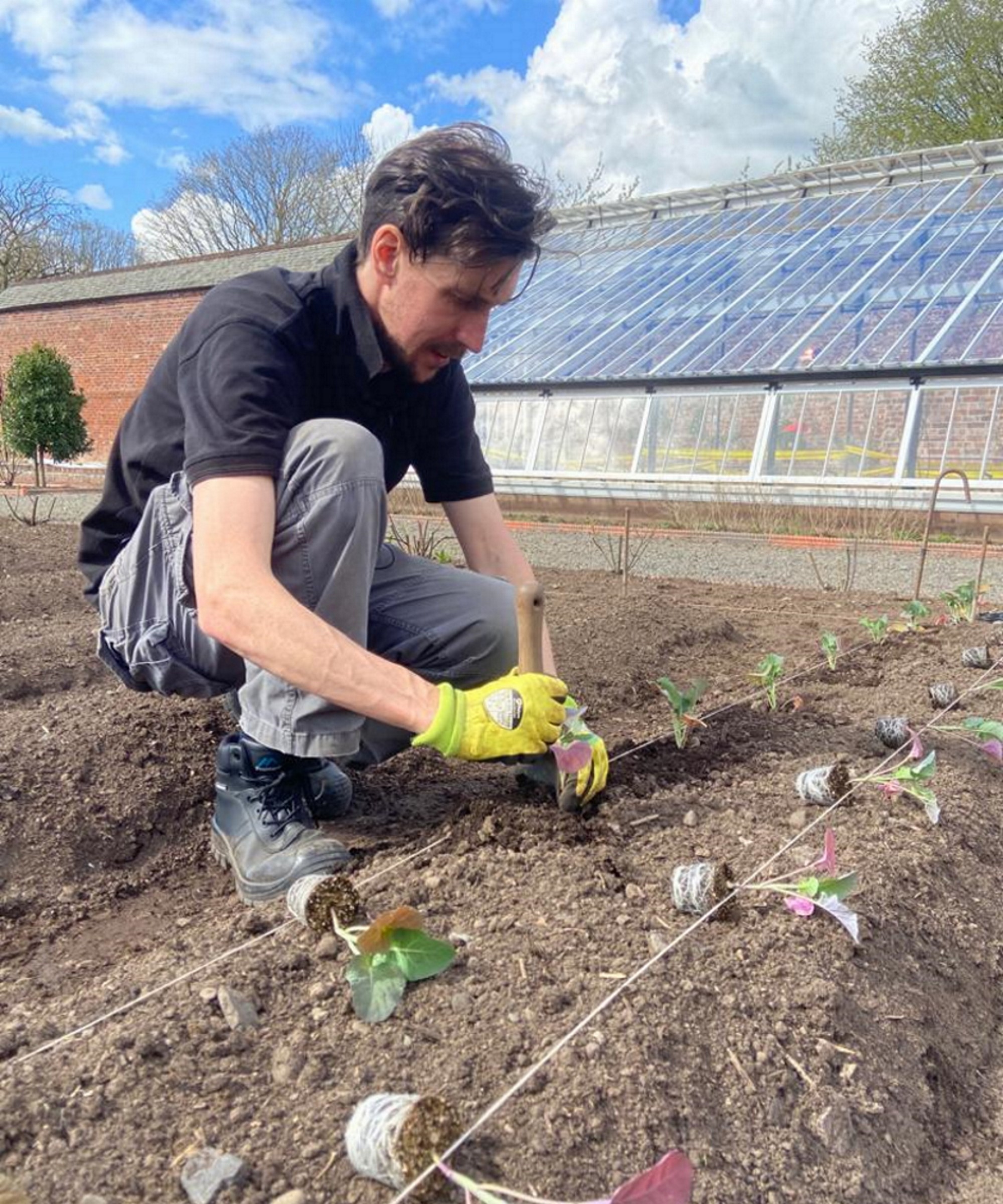
Drew has worked as a writer since 2008 and was also a professional gardener for many years. As a trained horticulturist, he worked in prestigious historic gardens, including Hanbury Hall and the world-famous Hidcote Manor Garden. He also spent time as a specialist kitchen gardener at Soho Farmhouse and Netherby Hall, where he grew vegetables, fruit, herbs, and cut flowers for restaurants. Drew has written for numerous print and online publications and is an allotment holder and garden blogger. He is shortlisted for the Digital Gardening Writer of the Year at the 2025 Garden Media Guild Awards.
